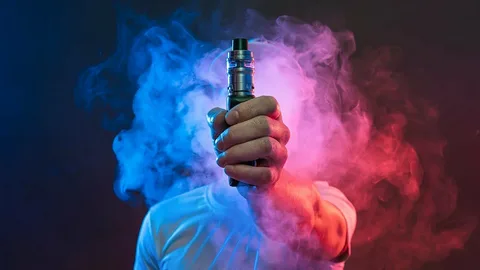Electronic cigarettes, or e-cigarettes, exploded onto the scene promising a revolution. Marketed as a cleaner alternative to smoking and a potential cessation tool, they’ve woven themselves into modern culture. Yet, beneath the visible plumes of vapour lies a complex web of psychological drivers that fuel vaping habits. Understanding why people vape – beyond just nicotine delivery – is crucial for navigating personal choices and public health discussions.
The Allure of the Invisible Hand: Habit Formation
At its core, vaping, like smoking, is a powerful habit loop. It follows the familiar pattern:
Cue: Stress, boredom, finishing a meal, seeing someone else vape, specific times of day.
Routine: The physical act of picking up the device, inhaling, and exhaling vapour.
Reward: The rapid nicotine hit (for nicotine-containing e-liquids), the sensory experience (flavour, throat hit), or the momentary relief from the cue (e.g., stress reduction).
The hand-to-mouth action itself is deeply ingrained, often carrying over from previous smoking habits. The immediacy of the nicotine delivery (faster than traditional cigarettes in some devices) reinforces this loop quickly and efficiently. Breaking this cycle requires identifying personal cues and consciously substituting routines – a significant psychological challenge.
More Than Just Nicotine: The Sensory Appeal
While nicotine is a primary driver for many, vaping offers a unique sensory experience absent from traditional tobacco:
Flavour Frenzy: Thousands of e-liquid flavours exist, from fruity concoctions to dessert-inspired delights and even novelty options. This vast palette caters to taste preferences in a way combustible cigarettes never could, making the act itself more pleasurable and less about just satisfying nicotine cravings. For some, particularly younger users, the flavour is a major initial attraction.
The Throat Hit: The sensation felt in the back of the throat upon inhalation is a sought-after experience for many vapers, mimicking the feel of smoking. Devices and e-liquid compositions (particularly the ratio of Propylene Glycol (PG) to Vegetable Glycerin (VG) and nicotine strength) are often chosen specifically to achieve the desired level of this sensation.
Cloud Chasing: For a subculture within vaping, the focus is on producing large, dense vapour clouds. This involves specialized devices (high-wattage mods) and high-VG e-liquids. The reward here is visual mastery, technical skill, and social recognition within that community, adding another layer beyond simple nicotine intake.
The Social Smoke (Without the Smoke): Identity and Belonging
Vaping has fostered its own distinct social identity and communities:
Tribe Mentality: Online forums, local vape shops, and cloud-chasing competitions create spaces for connection and shared interest. Being a “vaper” can become part of one’s identity, complete with its own jargon, culture, and norms.
Perceived Social Acceptance: Unlike smoking, which is often ostracized, vaping (initially) carried a more modern, tech-savvy, and sometimes even “healthier” image. This perception, though shifting as regulations tighten, can lower social barriers and make the habit feel more acceptable in certain circles.
Replacement Ritual: For ex-smokers, vaping often replaces the deeply social ritual of smoking breaks with colleagues or friends. The shared experience persists, just with a different device.
Stress, Boredom, and the Quick Fix
Like many habits, vaping is frequently used as a coping mechanism:
Stress Relief: The deep inhalation/exhalation can mimic calming breathing techniques, while the rapid nicotine hit provides a temporary feeling of relaxation or focus. It becomes a readily available tool to manage anxiety or overwhelm.
Boredom Buster: The act of vaping itself – fiddling with the device, tasting the flavour, blowing clouds – provides stimulation during idle moments. It’s something to do with one’s hands and mouth.
Mindfulness Escape (False): Ironically, while it might feel like a break, vaping can become an automatic behaviour done without conscious thought, offering only a fleeting distraction rather than true mindfulness.
Navigating the Clouds: Awareness is Key
Understanding these psychological underpinnings is vital:
For Individuals: If you vape, reflecting on why can be the first step towards greater control. Are you truly enjoying it, or is it an automatic response to a cue? Are there healthier alternatives to manage stress or boredom? Recognizing the habit loop empowers you to change it if desired.
For Public Health: Effective interventions and communication need to move beyond just the physical health risks (which are still being fully understood, especially long-term). Addressing the powerful sensory appeal, social drivers, and role as a coping mechanism is essential for crafting relevant cessation support and prevention programs, particularly for youth drawn by flavours and social trends.
For Honest Conversation: Acknowledging the complex psychology helps move discussions away from simplistic “good vs. bad” arguments towards a more nuanced understanding of why people use these products and what they get from them.
The Takeaway
Vaping is far more than just inhaling flavoured vapour and nicotine. It’s a behaviour deeply intertwined with habit formation, sensory pleasure, social identity, and emotional regulation. The visible cloud is merely the surface manifestation of these powerful psychological currents. By looking beyond the vapour, we gain a clearer perspective on the challenges and motivations surrounding e-cigarette use, fostering more informed choices and constructive dialogue about their place in our world.


